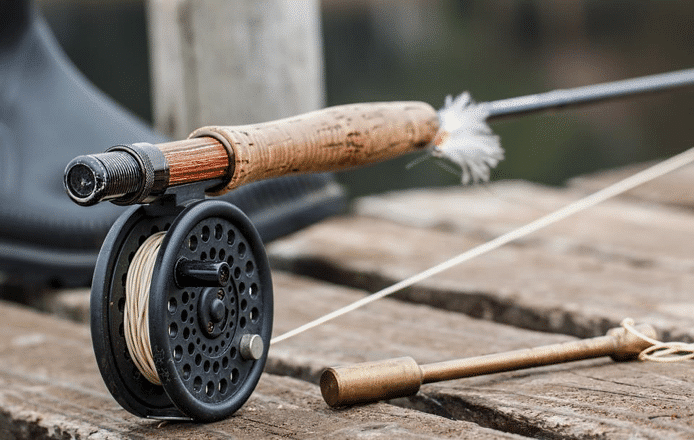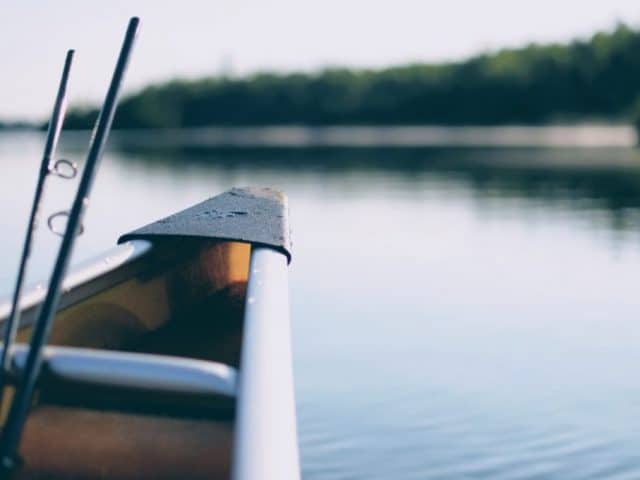The truth is, not all rods are created equal and having the right tool for the job is essential. With the wide variety of rods, combined with reels, and bait – it can get confusing as to what you need especially if you are a beginner.
The great thing about having variety is the fact that each specific rod comes with advantages that make it perform better for a particular type of fishing. This allows the best fisherman or woman to carry out the activity better than ever before.
The key is choosing the right rod, and we’re going to help make that decision simple for you.
Factors to Consider When Choosing a Fishing Rod
How in depth you go into these factors entirely depends on your method of fishing. If you are picking up a rod to use every other weekend with the kids, then you don’t need to go crazy.
If you are looking to get serious and treat fishing like a sport, then you want to get a rod that is going to serve a purpose for you.
Power

The amount of power a rod has is the level of pressure it can withstand before it snaps. Heavy action rods require a lot of pressure to bend whereas light action rods consistently bend at the slightest bit of pressure.
Between those two there is medium action which splits the difference. These are ideal for deep water lake fishing.
When you factor the power of the rod into what type of fish you can catch with it, it goes exactly as you would think.
- Heavy/ Extra Heavy Action Rods—Large fish in deep sea fishing
- Medium Action Rods—Medium sized fish in deep water lake fishing
- Light/ Ultra Light Action Rods—Small fish in lakes and rivers
Sometimes you will see this categorization as one through five—one is the lightest and five is the heaviest.
Action

This is the most critical but confusing factor to consider when picking a rod. The action is the location where the rod flexes when pressure is applied.
This usually refers to how far the tip of the rod bends down the blank. This is typically categorized as slow, moderate, fast, extra fast.
Slow means that the rod tip bends almost a third of the way down before it transfers that pressure to the blank. All that means is that the rod will give a lot before the fish takes off with the hook and bait. This works great for large deep sea fishing, but it makes it difficult to hook the fish when it strikes.
If the action is fast, that means that the rod only bends a few inches before it transfers the pressure to the blank. This allows you to cast heavier lures with precision and also drive the hook into the fish quickly when there is a jolt.
Length
This is a subject that all anglers seem to have a different opinion on. My take on rod length is that you should not have a rod any longer than you can handle. The length of the rod is going to affect the total amount of control you have over the fish.
The rod length also allows you to cast to areas you otherwise would not be able to because you got caught without a good position for a swing.
Longer rods also disperse the pressure from a hooked fish too so that can help a more amateur angler makeup for lack of skill when he or she needs to.
Material

 Most fishing rods today are made from one of two materials: fiberglass or graphite. Fiberglass is for baits that require a lighter action because they provide the necessary bend throughout the entire rod.
Most fishing rods today are made from one of two materials: fiberglass or graphite. Fiberglass is for baits that require a lighter action because they provide the necessary bend throughout the entire rod.
Graphite rods are the lightest and more reactive, and that makes them more expensive, but the sensitivity is what makes them the best fishing rod for most situations.
Line Guides
A line guide allows you to detect any pressure from the line to the blank. There is a wide variety of these available and with that comes good and bad quality.
There is the micro guide which is intended for very thin line on fly rods due to their sensitivity and reactiveness.
There are also standard line guides which are used more often on casting rods because they are intended for a larger line, but micro guides are becoming more popular for all kinds of rods due to their sensitivity.
Your choice in line guide is a matter of opinion and if you do not have experience with them you should experiment to see what works best for you.
Reel Seats
This is a standard item that does not usually come with many variations but its just as important as everything else. You want something that feels comfortable on your hands and plays well with the length and power of the rod.
If you cannot handle the rod well because it is not comfortable it does not matter what else you have on it; you will not enjoy yourself.
Check out the grip area on the rod too before you buy it. Depending on what you are using the rod for, you may be holding onto that area for long periods of time, so if it not incredibly comfortable, you should look into a variation or move on.
Rod Handles
There are a few types of rod handles, and they are EVA foam, cork, or a combo. This is a matter of personal preference, and we cannot tell you one is better than the other because they are both light and similar to grip.
What does matter, is the length of the handle. Long handles are intended for larger fish and heavier lures because they allow you to grip on with two hands to not only put more weight into your cast but also into battling a giant fish.
Short handles are intended for smaller fish, lighter lures, and a more precise cast. These are ideal in their way because they are most sensitive as well. The lack of material in short handles also makes the rod much lighter and more comfortable to travel with.
The Different Types of Rods and Their Uses
Since there are so many different types of rods, they each have a defined purpose that makes them perform the best.
Casting Rods


A casting rod is one of the most common rods you’ll see. This allows the fisherman to pinpoint the location of lure or bait and get it exactly where they want it.
Casting rods have eyes on the top and usually have a spin reel with a forefinger trigger grip. This rod is not complicated to use and requires a beginner to moderate skill level.
Spinning Rods
Spinning rods are closely related to casting rods but are often much lighter and smaller. These rods are approximately five to eight feet long, and the location of the eyes vary depending on the style of rod.
The primary difference between these and casting rods is how you use them. With spinning rods, the reel is underneath the rod (eggbeater reel), and this makes it much more comfortable to reel and cast.
Spinning rods are the best fishing poles for beginners because of the comfort and ease of use. The only primary downside to this type of rod is that you cannot easily cast to a specific area, but that is not much of a problem for recreational anglers.
Fly Rods

Fly rods have a unique shape and size, and they range greatly depending on where you are fishing. You can find fly rods that are extremely lightweight and are meant to catch small river trout all the way to heavy duty rods intended for big tuna and marlin.
The primary distinction of a fly rod from the rest is the missing butt on the rod. Below the reel is typically a handle of some sort, and fly rods do not have that because it slows them down and makes them bulkier. Excluding this allows the fly fisherman to cast quickly and freely.
Today most fly rods are carbon fiber with a wood or cork reel mount. The experts claim that the wooden mount is the way to go because it responds better to smaller movements.
Ice Fishing Rods
This is one of the most simple rods to use, and it does not differ much from the spinning rod. It is shorter in length to allow you to fish in small areas when ice fishing and does not use a standard reel.
Typically when ice fishing you are required to wind the line around two hooks by hand.
Sea Fishing Rods
These are the rods you see on television where the anglers are tackling giant tuna for two hours trying to bring it into the boat.
These rods are very thick and heavy duty, they come with large tips to prevent snapping, and they have a long and wide butt so you can hold on while fighting large fish.
Along with having a giant pole sea fishing requires heavy duty line and a huge reel as well.
There’s a fishing rod out there for every use and every type of fisher! Looking for your perfect fit? We’re here to help.






Great informative blog for all levels of fishermen and women. This is a great source of information for all ages and level of expertise.??
I appreciate your kind words, thank you so much! Good luck this winter if you ice fish!